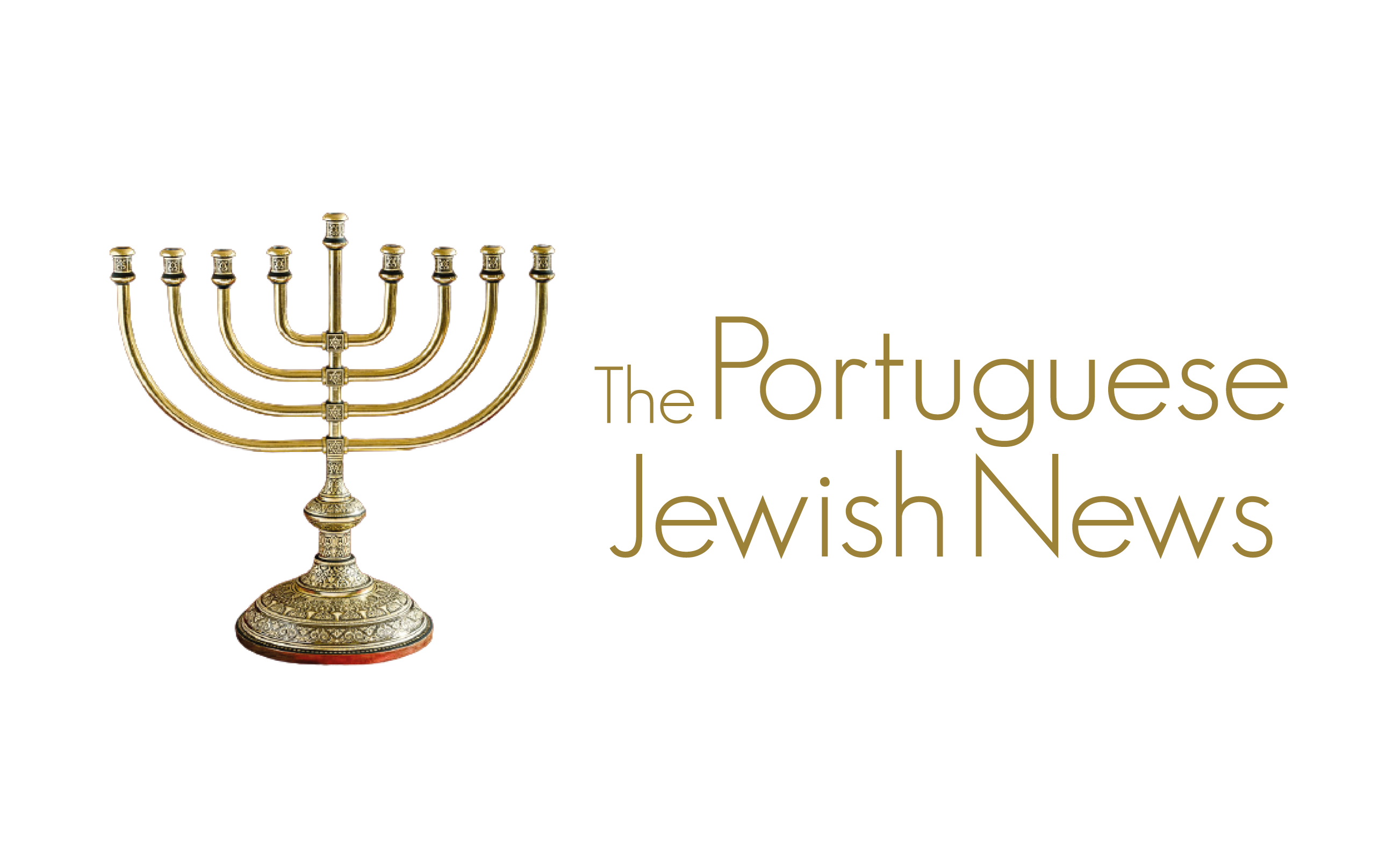This year’s EJA (European Jewish Association) Annual Holocaust Remembrance delegation to Auschwitz for senior leaders and politicians from across Europe took place on 22nd-23rd January 2024, with the theme “Never Again: Lip Service or Deep Commitment?”, at the start of the week of International Holocaust Remembrance Day, 27th January, and in the context of rapidly rising antisemitism across Europe and the world following the massacre of 7th October in Israel.
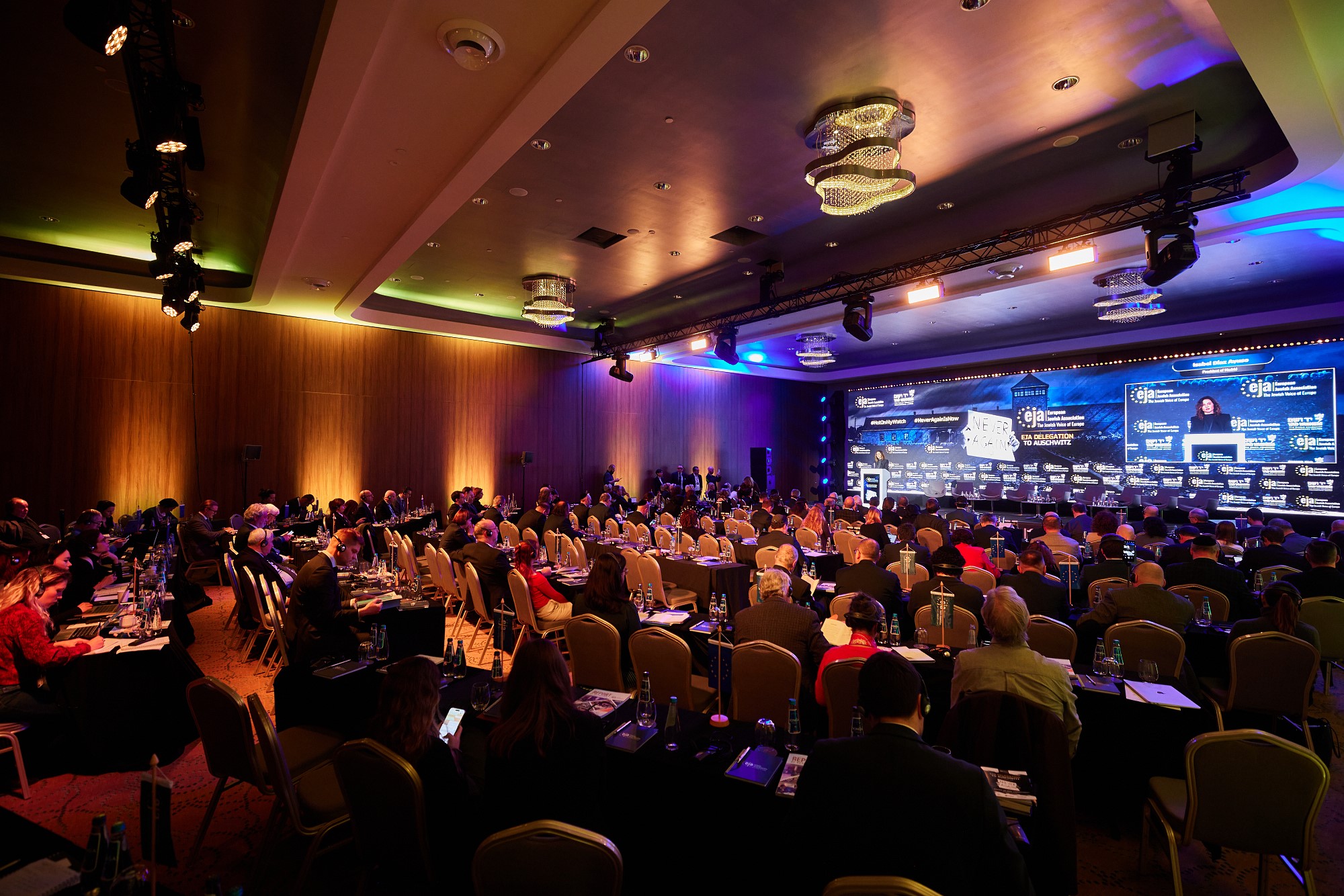
The symposium in Krakow. Credit: EJA
Rabbi Menachem Margolin, Founder and Chairman of EJA wrote in the introduction to the programme:
We have brought many delegations to Auschwitz. This one feels different. It feels like we are witnesses to a turning of a tide. A tide that threatens to overwhelm Jews, and whose consequences threaten the entirety of Europe, as we know it.
What defences will we build to stem this tide? How can we protect all that we hold dear: our values, our tolerance, our respect for the other?
We meet to find urgent answers to these fundamental questions.
Because never again is now, ladies and gentlemen. It really is now.
The programme comprised a symposium in Krakow on day one and a memorial service at the Auschwitz-Birkenau Concentration Camps on day two.
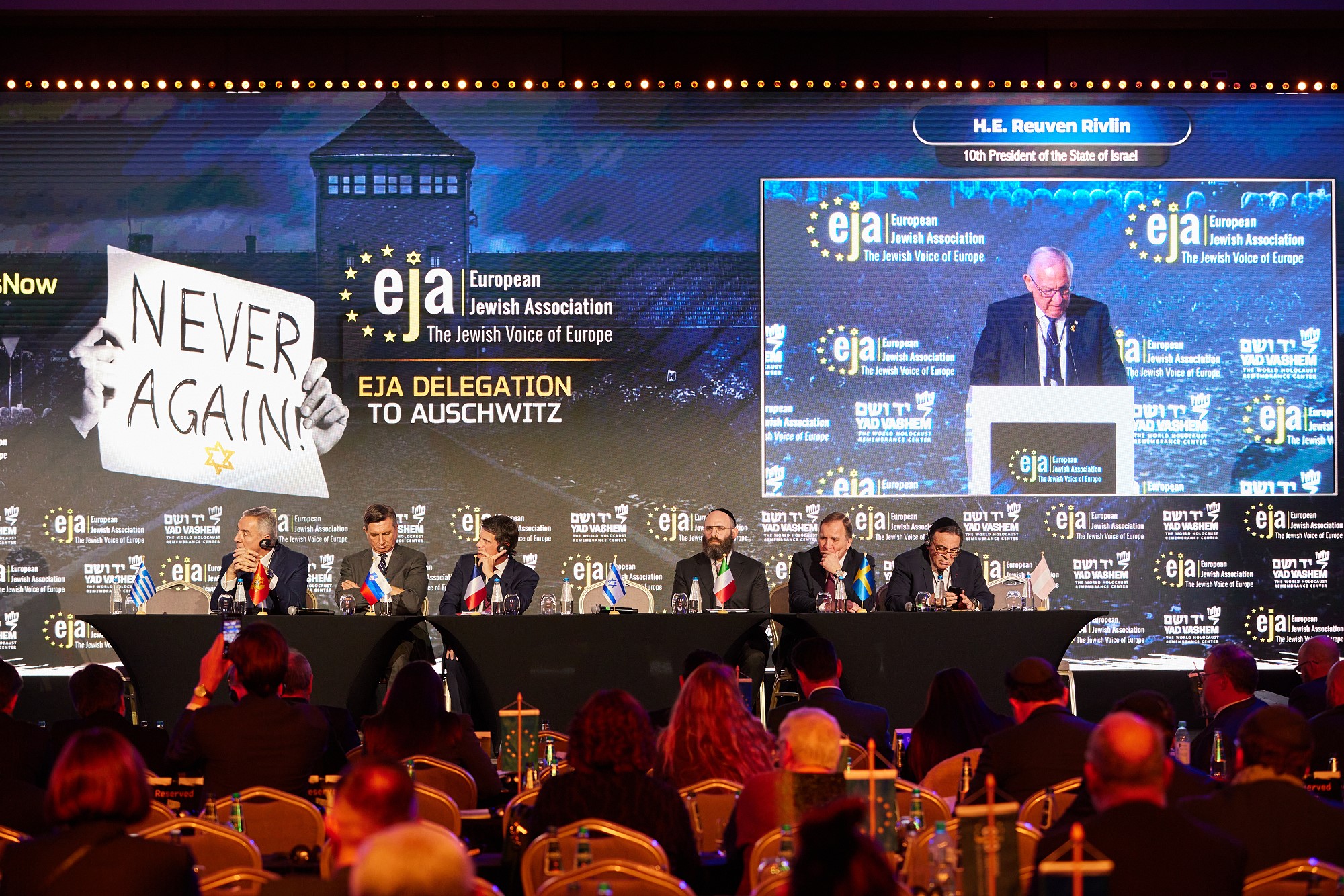
Reuven Rivlin, 10th President of the State of Israel. Credit: EJA
During the symposium, the issue of rising antisemitism in Europe and how to address it were discussed by Jewish leaders and students, Ms. Isabel Díaz Ayuso (President of the Autonomous Community of Madrid), Ambassador Dani Dayan (Chairman of Yad Vashem), and two panels of prominent European leaders including Stefan Löfven (former Prime Minister of Sweden, who met with leaders of the Jewish Community of Oporto in May 2021).
In the afternoon, Reuven Rivlin (the tenth President of Israel), introduced the newly formed European Jewish Association Leaders Forum to Fight Antisemitism and Racism, which includes leaders such as Manuel Valls (former Prime Minister of France), George Andreas Papandreou (former Prime Minister of Greece), and Stefan Löfven.
The most mediatic moment of the day was a conversation about online antisemitism with Elon Musk (owner of X, Tesla and SpaceX) and Ben Shapiro (host of the podcast "The Ben Shapiro Show”).
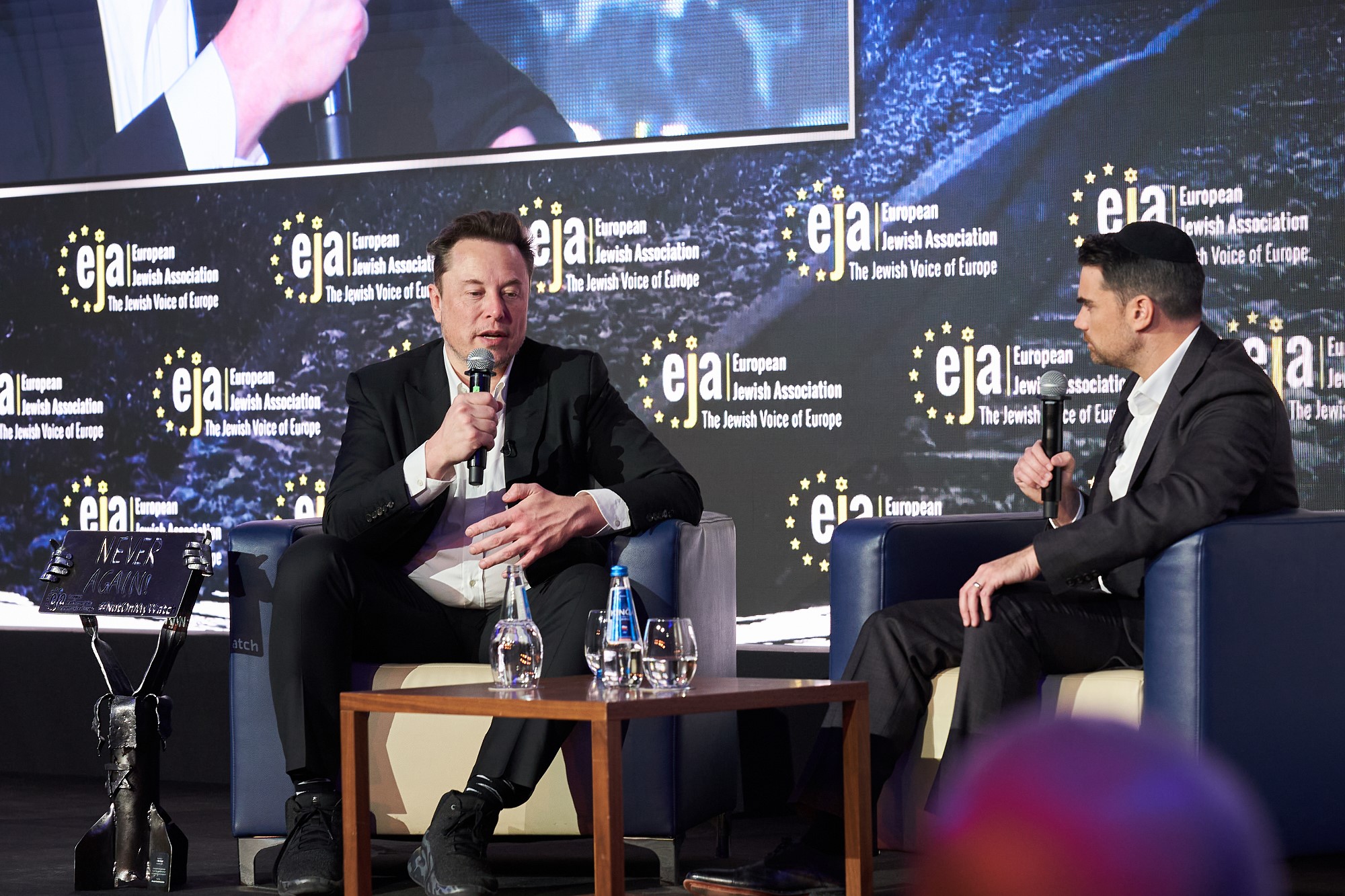
Ben Shapiro interviews Elon Musk about online antisemitism. Credit: EJA
This conversation followed a private visit by Elon Musk with Rabbi Menachem Margolin to the Auschwitz-Birkenau Concentration Camps in the morning. When asked about his reaction to the visit, Musk remarked that it would take several days to process this experience.
Later, noting that he has many Jewish friends, he said that he had never personally witnessed any act of antisemitism, and had not regarded antisemitism as a significant issue in the USA, until the shock of the pro-Hamas rallies in the USA after the 7th October massacre, especially at prestigious universities such as the University of Pennsylvania, his alma mater. He said that these shocking events are a wake-up call to any civilised person.
He mentioned that X allowed publication of the horrific videos of the Hamas massacre so that people could see what happened.
Regarding the dilemma between freedom of speech and suppressing antisemitism on X, he said that free speech prevails. He claimed that lies would be corrected.
The following morning a delegation of approximately 200 leaders, politicians, and media visited the Auschwitz-Birkenau Concentration Camps.
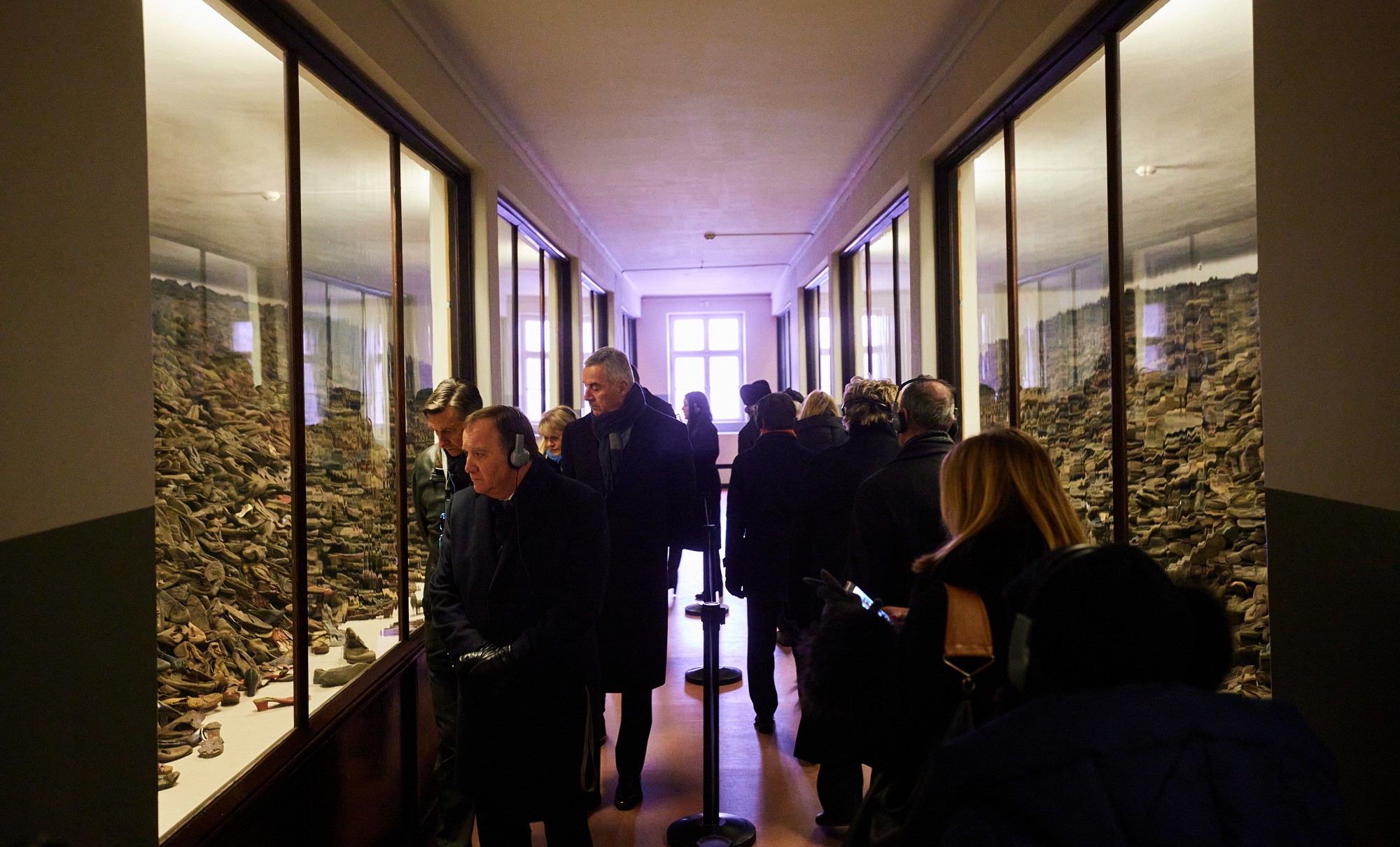
The Auschwitz I Concentration Camp contain many photographs and items belonging to the victims. Credit: EJA
The visit to the Auschwitz I Concentration Camp included visits inside various buildings in the complex that have been converted into a museum. They contain many photographs, items belonging to the victims, such as suitcases and shoes, and even the hair of victims, packaged in bales, to be sold to German companies as raw material for haircloth and felt. During the visit the guides explained the appalling treatment of the prisoners.
The visit then stopped outside the infamous Block 10 where Dr. Josef Mengele carried out his horrific medical experiments, particularly on pairs of twins. Holocaust survivor Chaya Lassmann, the 99-year-old mother of Oporto Community member Josef Lassmann, was one of his victims. The visit then continued into the adjacent courtyard, where thousands of prisoners at were shot at the “Death Wall” by the SS.
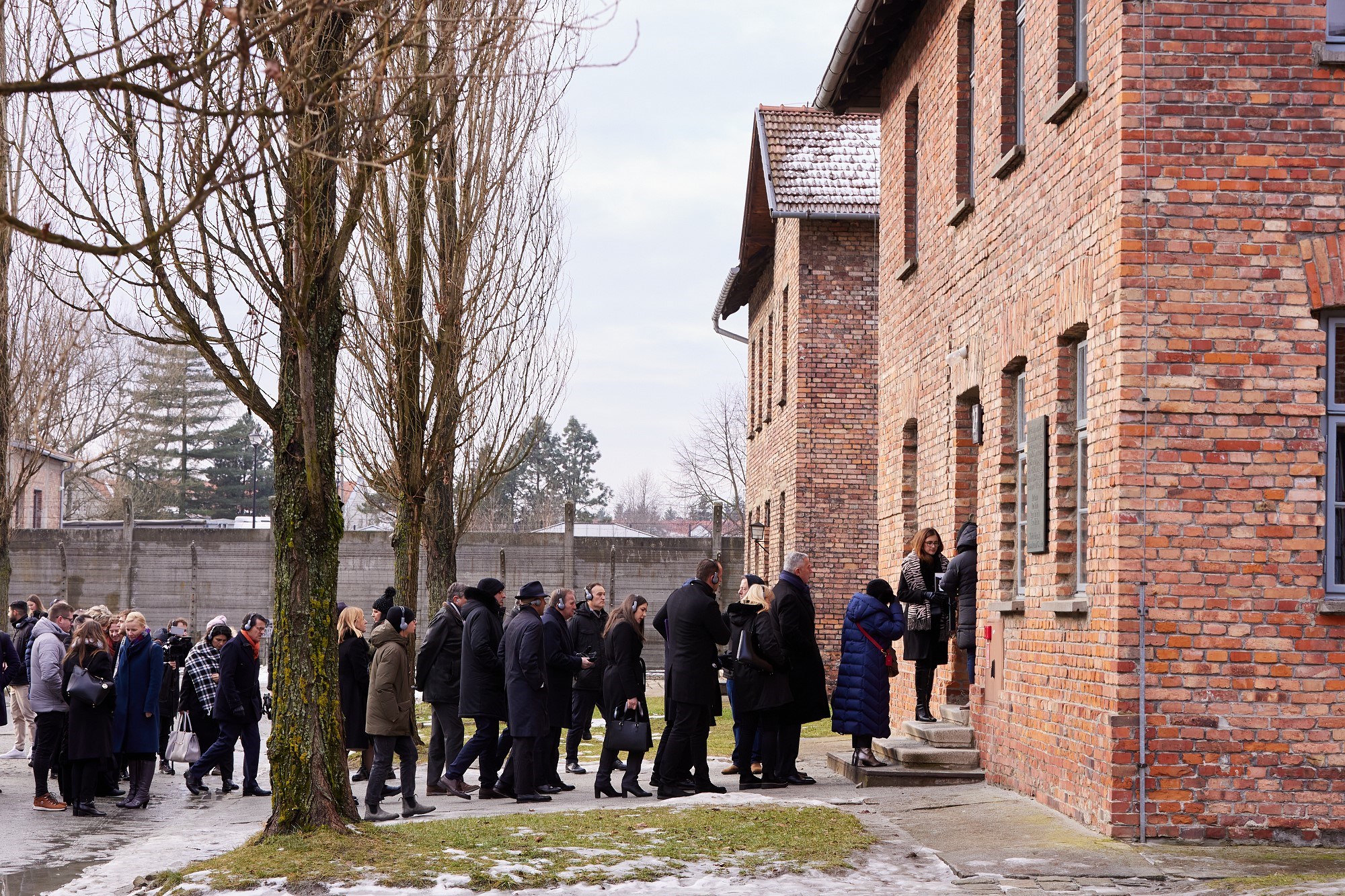
A delegation visited the Auschwitz-Birkenau Concentration Camps. Credit: EJA
The next stop was the Holocaust Museum installed by Yad Vashem (The World Holocaust Remembrance Centre in Jerusalem) in one of the buildings. One particularly striking item in this museum is the large book, filling an entire room, with the names of four million victims of the Holocaust. It was a very emotional experience to see the names of my maternal grandparents in this book on this first visit to the Auschwitz-Birkenau Concentration Camps.
The final stop in this visit of Auschwitz I was the gas chamber and crematorium, it being noted that all those at Birkenau were destroyed and had not been rebuilt.
The visit then continued at the Birkenau (Auschwitz II) Extermination Camp. Nearly all the buildings were destroyed in this camp, especially the wooden barracks, with only their brick chimneys remaining, making for a particularly desolate sight on this cold January morning. In this vast area of 140 hectares, 1.3 million people were systematically murdered from 1942 in a quasi-industrial process, as part of the Nazis’ “Final Solution”, whose goal was to eliminate the Jewish population of Europe.
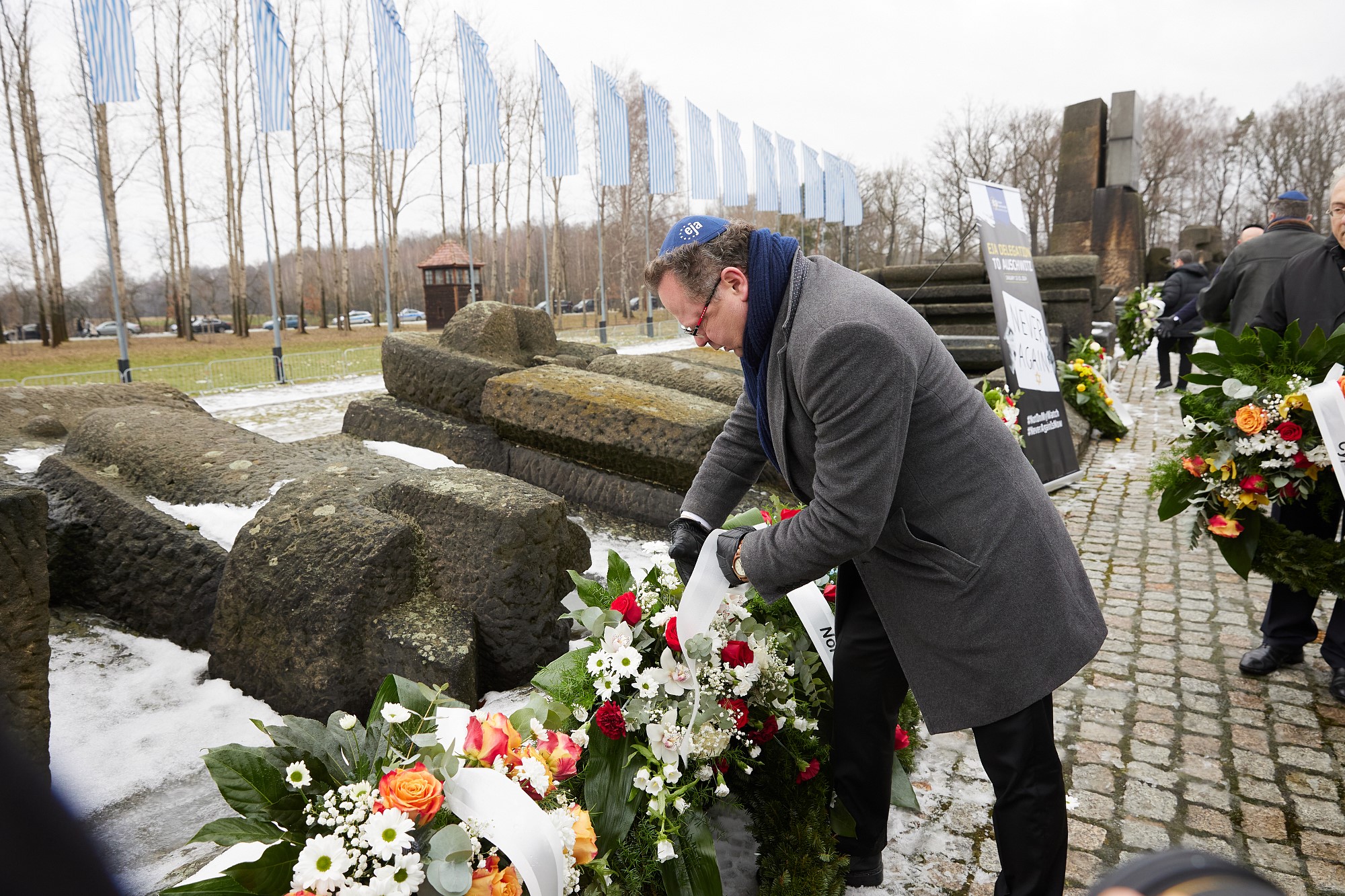
The wreath-laying ceremony. Credit: EJA
The visit to Birkenau concluded with a memorial service, with the Kaddish prayer read by Rabbi Binyomin Jacobs (Chief Rabbi of the Netherlands), and a wreath-laying ceremony with political leaders each laying a wreath in the name of their country. No wreath was laid in the name of Portugal as none of the Portuguese politicians invited was present.
